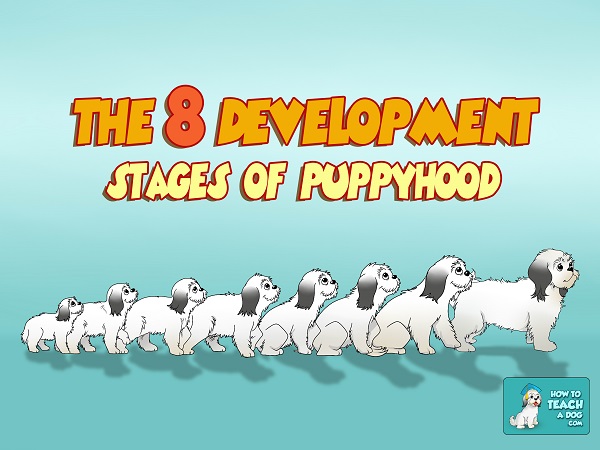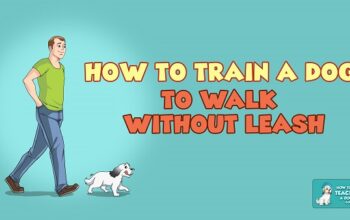
It may seem like puppies leap from early puppyhood to doggy adolescence in the blink of an eye, but if you pay close attention, you may notice that growing doesn’t happen all at once. Regardless of breed, all puppies go through several developmental stages starting from their first days on earth up to maturity, when they reach their full size potential. Consider though that these stages aren’t exclusively dictated by physical changes but also mental ones too. Behavior professionals often refer to some of these stages as “critical” because of their lasting effect on the puppy’s future behavior. Learning more about these stages paves the path towards a better understanding of your puppy and gives you an important head start on what to expect in the weeks and months to come.
These are the 8 development stages of puppyhood
Stage 1:The Neonatal Stage 0 to 2 weeks
As the name implies, this is the very first stage of puppyhood and begins from the day the puppies are delivered. Born blind, deaf, without teeth and unable to regulate their temperature, puppies are quite vulnerable creatures the first days after birth. Thankfully, mother dog is very protective and takes good care of them. She’ll warm up the puppies, feed them, clean them and elicit them to eliminate by licking their bottoms. Puppies at this stage do a whole lot of sleeping, they’re estimated to sleep about 90 percent of time and they twitch a lot during sleep. The remaining 10 percent is spent feeding. Their immune systems are boosted by the ingestion of their mom’s first milk, a gold fluid known as colostrum, which is very rich in antibodies. This immunity will protect them from disease during their first weeks of life. Despite being blind and deaf, puppies at stage are capable of using their sense of smell well enough to detect their mother so they can crawl their way to nurse.
Stage 2: The Transitional Stage 2 to 4 weeks
At this stage, puppies become explorers as the world unveils before their eyes. Indeed, during this time, the puppies’ eyes open and their sense of hearing develops. Since puppies can now see their mother and litter mates, they start to learn the ABC’s of canine society. During this time, puppies also gain more strength in their legs and they capable of standing. As they stumble around, play behavior starts to bloom and puppies learn to communicate through new vocalizations. While during the neonatal stage puppies were totally dependent on their mother, in the transitional stage they start gaining a bit of independence. They start to eliminate on their own and their very first teeth erupt. It’s not unusual to see some puppies already interested in mother dog’s food bowl and some may even take a sample or two.
Stage 3: The Socialization Stage 4 to 12 weeks
At week four, the critical window of socialization starts opening. During this time, the breeder should start exposing the puppies to many positive experiences that will have a lasting effect on the puppies’ future behaviors. Now that the puppies are capable of walking around more, they’ll continue to play, and through play with their siblings, they’ll learn valuable lessons about bite inhibition. When a puppy is too rough, his playmate squeals to tell the puppy to be more gentle with his teeth. Around 4 weeks, mother dog will start producing less milk. With the development of sharp teeth, nursing becomes painful for mother dog and her reluctance to feed her pups gets kick starts the weaning process. The puppies can now start sampling new food sources. Once the puppies are 8 weeks, they should be fully weaned and ready to go to their new homes. However, certain small breeds of dogs are better off staying with mom and siblings up to 12 weeks.
Stage 4: First Fear Period 8 to 11 weeks
The fear period slightly overlaps with the socialization stage. When puppies are sent to their new homes, around the age of 8 weeks, they’ll go through their first fear period, taking place between 8 and 11 weeks. During this time, the pups can become fearful and shouldn’t be exposed to scary events such as being shipped across the world or undergoing elective surgeries. With gentle exposure, taking care in not overstimulating them, puppies can be continued to be successfully socialized. Avoid frequented areas though that are highly frequented by stray or unvaccinated dogs as your pup at this age is vulnerable to potentially fatal infectious disease. This is a good time to start puppy classes with a reputable trainer.
Stage 5: Seniority Classification Stage 12 to 16 weeks
This is a pre-adolescent stage where the puppy may engage in testing behaviors to ascertain what he may and may not get away with. Puppy nipping and mouthing behaviors are very common during this time and you must provide clear, consistent rules about what is allowed and what is not. Puppies at this stage need a structured environment but must be treated with kindness. Nipping behaviors should be directed to appropriate toys. Handling exercises will help the puppy learn to enjoy touch for those future vet and grooming visits. Praising and rewarding appropriate responses will help shape a positive attitude.
Stage 6: Flight Instinct Period: 4 to 8 Months
During this time, puppies start testing their wings to “take flight.” They’ll become more independent and may wander to sniff around totally oblivious to your requests to come back to you. This is a good time to polish the recall command by making coming to you extra appealing. Always keep your puppy on a leash or long line when you are not in a confined area. During this time, you may notice as well an increase in chewing behaviors. Make sure to have several durable chew toys on hand.
Stage 7: Adolescent Stage: 6 to 18 months
As the name implies, expect more testing behaviors from your adolescent dog. This stage may be considerably shorter in smaller breed dogs and considerably longer in the larger ones. When dogs reach this stage, they’re usually reaching sexual maturity and urine marking begins in intact males. Female dogs may go into estrus and male dogs may start roaming in search of a mate. Some dogs at this stage may also start being less friendly to other dogs and the first squabbles may erupt in the dog park. Don’t get discouraged by all these changes. This is a good time to enroll your big puppy in obedience classes to keep him active and stimulated. After the adolescent stage, your dog will have reached social maturity and will become an adult generally betweeen 12 months and up to 3 years of age.
Stage 8: Second Fear Period 6 to 14 months
This fear period coincides from the beginning to middle of the adolescent stage and usually has a bigger impact than the first fear period. Dogs by now can be quite large and their fearful behaviors may appear more worrisome. Affected dogs may be reluctant to approach novel stimuli or they may show concern towards familiar ones. These dogs can be helped by not forcing them to face to their fears at least until they’re ready to. Desensitization along with counter-conditioning will help.
Even though all dogs go through developmental stages, it’s important to note that developmental stages tend to slightly vary from one puppy to another and not all will exhibit the behavior changes listed above. As with people, dogs are individuals and there are no rules written in stone. Regardless, all dogs seem to go through the rambunctious puppyhood, the challenging teenager phase and the smoother adulthood followed by the more laid-back senior years.


